Adult Overbite Correction: Options for a 57-Year-Old with Missing Teeth
Key Highlights
- Overbite correction in adults with missing teeth often requires a multidisciplinary approach, combining orthodontic treatment, dental implants, and surgical options such as orthognathic surgery.
- Age-related effects like bone loss and periodontal breakdown can pose unique challenges for treatment in older adults.
- Timely orthodontic intervention can improve oral health, reduce soft tissue trauma, and enhance the patient's quality of life.
- Customized treatment plans and ongoing monitoring are critical to successful outcomes in adult orthodontic patients.
Introduction

Today, we will talk about a complex case for an adult patient who was 57 years old with missing posterior teeth and flared front teeth. He has a severe overbite of 8 mm and a traumatic bite where his lower incisors were hitting his gums. He was unable to function or chew. His chief complaint was, "I want my buck teeth back, and I want to be able to chew my food again."
He needs at least six implants to replace the nine missing teeth and orthodontic treatment to correct his bite and teeth. This case required coordination between three specialists and proper planning.
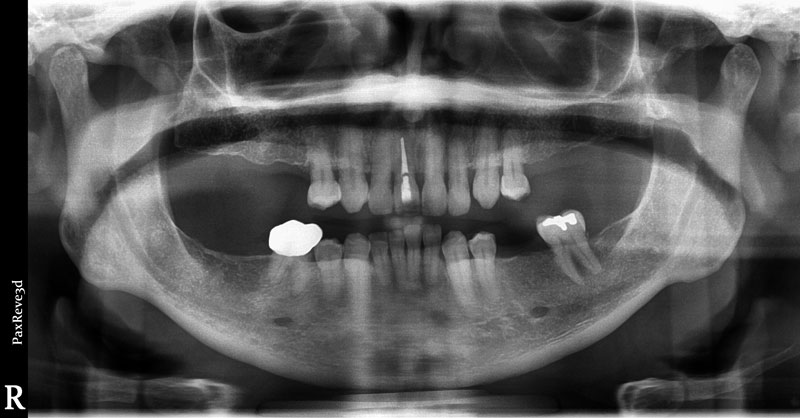
Treatment Plan
The dilemma in this case was whether to place the implants first or to do orthodontic treatment to reposition the teeth and open his bite.
- If we place the implants first, they might interfere with future orthodontic movement.
But if we started the orthodontic treatment first, we would not have enough posterior support to correct the protruded upper front teeth and open his bite.
Therefore, we needed to plan his future occlusion and teeth before placing the implants in the proper position.
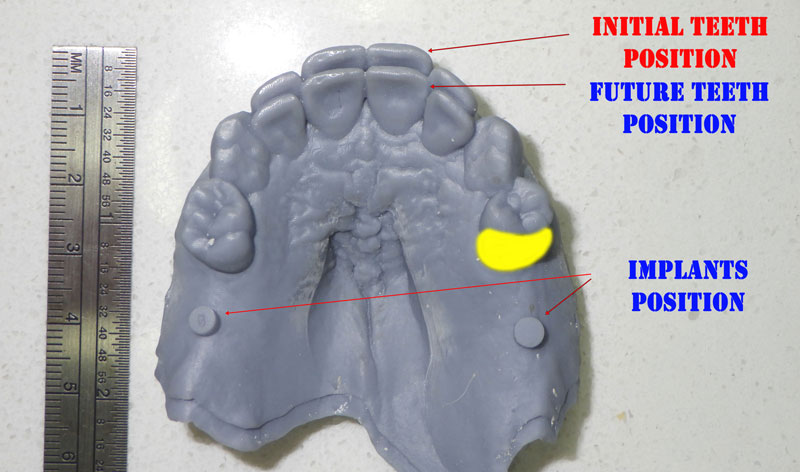
A Template was made of this model to help the dentist locate the proper location of the future implants
We created an excellent GPS "Guided Planning System" for this case. After making a 3D dental model of the patient's future teeth, Dr. Kanaan, the orthodontist, made a template for the patient's upper teeth, indicating where the patient's upper teeth would be AFTER orthodontic treatment. His dentist used this template to place the implants based on the future position.
The CT scan bone examination before treatment revealed sufficient width and height of the bone, which we utilized.

We started the case on September 22, 2022. Two months later, on November 10th, he received six implants. A significant question arose: Should we load these implants immediately? Due to the quality of the bone and the type of heavy-thread implants used, we were able to load all of his implants five days after their surgical placement. He received the implants on November 10th, and by November 15th, we began bringing his teeth backward!

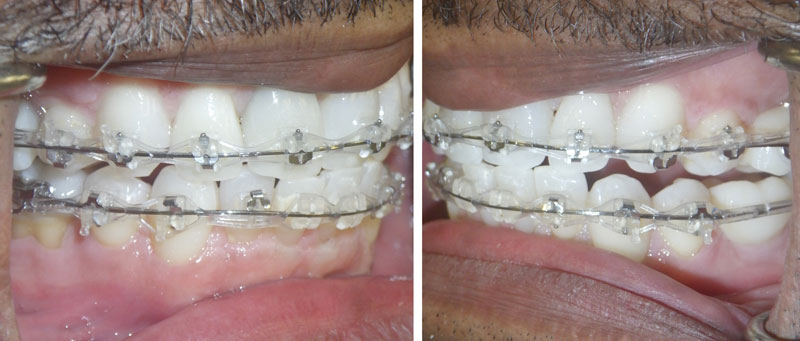
The treatment progressed well, and after eight months, we achieved an edge-to-edge bite. We also started him on cl III elastic rubber bands to correct the bite and midline. We performed some IPR on the lower teeth. Due to the asymmetric nature of the missing lower teeth, we could not completely correct his midline. At the end of the treatment, the patient was pleased with the results.

We have been following up with the patient, using clear Pactiv braces to reduce friction from IOS. This bracket system is unique to lower the friction and allow the teeth to move faster. The patient received six implants: two on the upper right, two on the upper left, one on the lower right, and one on the lower left. The X-ray shows a cantilever, three-unit implant on the upper left side, all fused together.

Challenges of Overbite Correction in Older Adults
I want to discuss the argument about whether to load the implants immediately, which means within 24 hours, or after three or four months. If we look into the literature, we find a study published in 2022 in the Oral and Maxillofacial Surgery journal that compares the success of immediate versus delayed loading of implants. This study, titled "Fresh Sockets: A Systematic Review of Meta-Analysis," found that immediate loading of dental implants, under certain conditions, is a successful treatment process and is effective in reducing treatment time. Therefore, immediate loading represents a valid alternative to traditional delayed loading rehabilitation.
It's important to note that in this article, the implants were placed in fresh sockets, meaning the teeth were removed and the implants were placed immediately. In our case, the patient already has missing teeth, so the quality of the bone is lower. However, we still achieved good success with a high torque of more than 50 Newton.
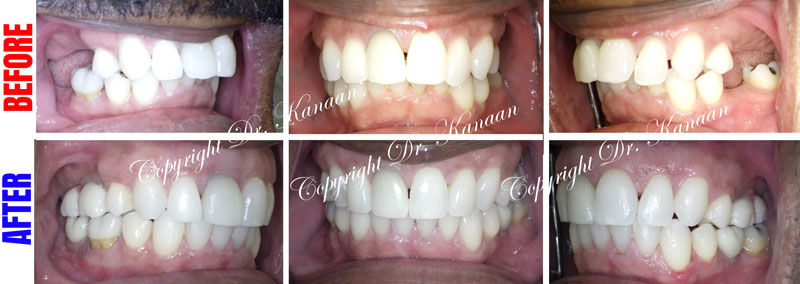
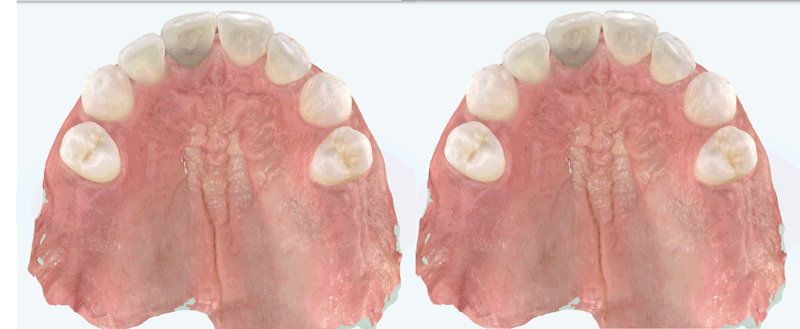
Understanding Overbite and Missing Teeth
Overbites happen when the upper front teeth overlap the lower front teeth too much. This is a common dental issue. For adults with missing teeth, ignoring overbites can cause many problems. These problems can include tooth decay, periodontal breakdown, and bone loss. This won't just make eating hard; it can also lower a person's confidence. Knowing why overbites occur and how they affect dental health helps in finding the right fix.
Complications Due to Missing Teeth
Missing teeth affect treatment for overbites a lot. When teeth are missing, the upper and lower front teeth have to handle more pressure. This makes the overbite worse. Teeth next to the gaps may move, which harms bite alignment.
Dental implants are a good solution for fixing the issues caused by missing teeth. When putting in implants, it is crucial to think about the thickness of the jaw bone and any history of tooth loss.
Also, missing molars, and sometimes wisdom teeth, can cause bone loss and create gaps that misalign other teeth. Fixing this issue usually needs a detailed dental treatment plan. This plan should include orthodontics, implants, and prosthetics to get the bite back to normal.
Conclusion
Fixing an overbite can greatly improve the quality of life, especially for adult patients with missing teeth. There are different treatment options available, like orthodontic care and dental implants. These solutions are personalized based on each person’s needs and dental health. Talking to experienced orthodontists helps ensure that you understand everything and are ready for the best results for long-term oral health. These treatments not only fix bite issues but also deal with beauty concerns, which can boost confidence. Regular dental check-ups and following maintenance tips are key to keeping good results and avoiding problems later on.
References:
Hoggan BR, Sadowsky C. The use of palatal rugae for the assessment of anteroposterior tooth movements. Am J Orthod Dentofacial Orthop. 2001 May;119(5):482-8. doi: 10.1067/mod.2001.113001. PMID: 11343019.
Patel R, Ucer C, Wright S, Khan RS. Differences in Dental Implant Survival between Immediate vs. Delayed Placement: A Systematic Review and Meta-Analysis. Dent J (Basel). 2023 Sep 15;11(9):218. doi: 10.3390/dj11090218. PMID: 37754338; PMCID: PMC10528222.
Is overbite correction possible at any age?
Yes, you can fix an overbite at any age if you have healthy teeth and bone. Orthodontic treatments can work well for older adults. But things like bone density and dental health are important to find the best method for each person.
What are the risks associated with overbite correction in older adults?
Correcting an overbite in older adults may have some risks. These can include lasting discomfort, tooth sensitivity, or issues from anesthesia. There is also a chance of teeth or gums becoming misaligned or damaged if the treatment is not watched carefully during the process.
How long does it take to correct an overbite in adults?
The time it takes to fix an overbite in adults depends on how serious it is and the treatment you choose. Usually, treatments can last from a few months to a couple of years. Regular check-ups are important. They help track progress and make necessary changes to the plan.
Are there non-surgical options available for overbite correction?
Yes, there are non-surgical ways to fix an overbite. You can use orthodontic treatments like braces or clear aligners. These treatments slowly move your teeth into the right position. There are also dental appliances that help improve bite alignment without surgery. Always talk to a dental professional to find the best option for you.
How can missing teeth complicate overbite correction?
Missing teeth can leave gaps that cause nearby teeth to move, making an overbite worse. Without proper support, it can be hard to align teeth correctly, so getting the best results can be tough. Plus, missing teeth can change how bite force is spread out, making the fix even harder.
What should one expect during the recovery phase of overbite correction?
After correcting an overbite, people might feel some discomfort, swelling, or mild pain. It is important to follow post-treatment instructions to heal properly. Going to regular follow-up appointments will help check your progress and solve any issues. This will lead to great results and reduce the chances of problems.
